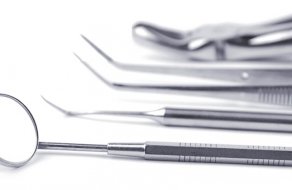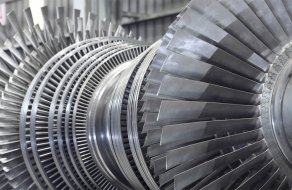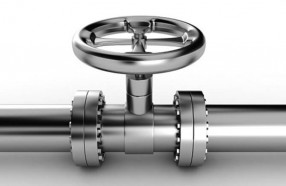Material Grades
TYPES OF STAINLESS STEELS
Stainless steel has been an integral part of our lives. Whether it is utensil or home furnishing materials, stainless steel consistently remains at the top of our priority list. And given the impeccable features of stainless steel, it is quite apparent.
Although stainless steel is our essential companion in life, most of us are still unaware of its composition. Isn’t it? So, let’s begin with some of the crucial facts about stainless steel. Stainless steel is primarily an iron-based alloy consisting of about 11% of chromium, and traces of other elements such as nitrogen, aluminum, sulfur, silicon, titanium, nickel, copper, selenium, niobium, and molybdenum. Amongst the various unique properties of stainless steel, its rust and heat resistance features are the ones that redefine it. These two redefining properties are mostly due to the presence of the transition metal, Chromium. It forms a passive film over stainless steel materials that protects the underlying material from corrosion or rust formation. Furthermore, it allows the material to self-heal in the presence of oxygen. And the best part is, the resistance can be increased by increasing the elements by little amounts. Accordingly, there are various stainless steel grades with varying quantities of chromium, molybdenum, or nickel.
Now, let’s come to the different types of stainless steels based on their composition.
There are four categories of stainless steels that can be classified by their crystalline structures. These are as follows:
Austenitic Stainless Steels – This type of stainless steel bear austenite as their primary crystalline structure. The austenite structure is achieved by adding sufficient amounts of austenite stabilizing elements like nickel, manganese, and nitrogen. The compact and robust structure prevents the steel from hardening under heat treatment. Thus, making them non-magnetic. The austenitic steels are further subdivided into two groups: 300 series stainless steel and 200 series stainless steel sheets. The 300 series attain their austenitic structure by nickel addition. Whereas, the 200 series usually substitute manganese and nitrogen for a nickel. The most common austenitic stainless steel is Type 304. It is also the most commonly used stainless steel in nature. The common application of the 304 types is in the making of kitchen utensils, cutlery, and other kitchen devices. The next common type in the series is Type 316, which contains molybdenum to offer acid resistance and prevents pitting and crevice corrosion.
Ferritic Stainless Steels – Ferritic stainless steel is the second most preferred steels from the quadrate family of stainless steels. The ferritic one is highly resistant to corrosion and pitting. It also offers more excellent thermal conductivity than the austenitic stainless steels, which is an added advantage to heat exchangers. Its thermal expansion coefficient is close to that of carbon steel, facilitates the welding of carbon steels. The ferritic stainless steels find various uses and applications in day-to-day life. Ranging from solar heaters, white goods to slate hooks and coins, everything is carved out of ferritic stainless steel. And one of the essential applications is in the latest kitchenware. With the use of ferritic stainless steel in modern kitchenware sets, you can avail superior quality products at lower prices.
Martensitic Stainless Steels – The next category of stainless steel based on the crystalline structure is the Martensitic stainless steel. This steel can be hardened and tempered by subjecting it to aging/heat treatment in various ways. This stainless steel consists of both high-carbon as well as low-carbon steel. Additions of B, Co, Nb, and Ti enhance the high-temperature properties, especially creep resistance. Martensitic stainless steels have a wide range of applications. The corrosion-resistant engineering steels are used in pumps, valves, and boat shaftes due to their high mechanical properties. On the other hand, the wear and corrosion-resistant ones are used in cutlery, medical tools like scalpels, razors, internal clamps, razor blades, and ball bearings brake disks, and more.
Duplex Steel – The duplex stainless steel is unique. It’s probably because its metallurgical structure combines both austenite (face-centered cubic lattice) and ferrite (body-centered cubic lattice) structures in almost equal proportions. The duplex steels possess better corrosion resistance, specifically chloride stress corrosion and chloride pitting corrosion. Besides, they even bear a higher strength than that of the austenitic stainless steels like Type 304 or 316. The variation in power is probably due to the difference in composition. Duplex steel has a higher chromium and molybdenum content, followed by a lower nickel content. The lower nickel and higher strength add to cost benefits. Thus, this type of steels is extensively used for pipeline systems, manifolds, risers, and pressure vessels in oil & gas and the petrochemical industry.
17 4 PH Stainless Steels – The 17 4 PH stainless steel, also known as SAE Type 630 Stainless steel or UNS 17400, is a grade of martensitic precipitation hardened stainless steel. It consists of approximately 15-17.5% chromium, 3-5% nickel and 3-5% copper. The name ‘17 4’ is derived from the rounded-up value of the chromium and nickel content 17% and 4%, respectively. If we talk about this steel’s properties, high strength, hardness, corrosion resistance, and machinability are the common features worth mentioning. However, the hardness can be further increased by heat treatment. Besides, 17 4 is magnetic. Due to its strength, it is widely used in petrochemical industries. It also finds its application in making aircraft parts.
Common Types Of Austenitic Stainless Steels
Grade 303 – The 303 Grade austenitic stainless steel is known for its exceptional toughness. However, it cannot be hardened by heat treatment. It is a free-machining grade and is a modified version of the necessary 18% chromium / 8% nickel stainless steel. It exhibits good machinability while maintaining high mechanical and corrosion resistance at the same time.
Grade 304H – The Grade 304 H possesses excellent tensile strength due to its higher carbon content. It, in turn, makes the steel perfect for various applications where elevated temperatures are used. It is an austenitic steel alloy consisting of chromium, carbon, nickel as the main constituents. Besides the high tensile strength, it also has more significant heat-resisting properties. It also bears greater short and long term creep strengths. The 304H stainless steel finds its use in oil refineries, gas, and chemical industries and the construction of pressure vessels, heat exchangers, boilers, pipelines, and condensers. It is also a crucial component of the power generation industry.
Grade 304LN – The 304 LN grade of stainless steel is the nitrogen- strengthened version of the 304 types. It consists of about 18-20% of Chromium, 8-12% Nickel, and other elements like manganese, silicon, nitrogen, carbon, sulfur, phosphorus, and iron. You can see that this stainless steel has comparatively higher amounts of Chromium and Nickel. Thus, it imparts added resistance to corrosion and also bears a specific microstructure. Besides being hard, it possesses high tensile strength as well as yield strength. The 304 LN grade stainless steel is also quite popular as an essential component in heat exchangers, chemical industry, food industry, and even petroleum, fabrication, and nuclear industries.
Grade 316L – As mentioned earlier, it is the second most common type of stainless steel and is composed of iron, chromium, nickel, and molybdenum. It also contains small amounts of silicon, phosphorus, and sulfur. The presence of molybdenum enhances the corrosion resistance than that of the primary 304 grade. 316L grade is a low-carbon version of the 316 stainless steel. It is mostly used in chemical and petrochemical industries, pharmaceuticals equipment, food processing, and medical devices. And the unique application is in portable water and wastewater treatment. Besides, it is also used in marine and architectural applications. Thus, The Grade 316L has extensive usage in various fields of work.
Grade 316H – Contrary to the 316L, grade 316H is a high-carbon variant of the 316 stainless steel. It has greater tensile strength and yield strength as well. The austenitic structure of the material offers excellent toughness to this variant, even in cryogenic temperatures. It also possesses increased heat resistance. Thus, this grade is the best for use in applications requiring elevated temperatures. The various applications of the 316H stainless steel include the materials of petrochemical, gas, and chemical industries. It is also used in the fabrication of pressure, industrial boilers, and heat exchangers as well. Its ability to resist heat is the positive aspect that makes it one of the desirable raw materials in most industrial manufacturing works.
Grade 304L – The grade 304L is very similar to the 304 grade. Both of them bear more or less the same chemical and mechanical properties. However, the difference is in the carbon content. While 304 contains a maximum of 0.08% carbon content, the 304L has a maximum of 0.03%. On this note, let’s tell you that the range of carbon content in stainless steel affects the corrosion resistance. Consequently, it decides the fate of ‘chrome carbon precipitation,’ a phenomenon that occurs during steel welding. What happens in it is that the chrome binds with a carbon of the heat-affected zone and precipitates as chromium carbide at the grain boundaries. Fortunately, since 304L is low in carbon content, chrome carbon precipitation risks are comparatively lower.
Grade 304 Stainless Steel – The 304 level is the most common type of stainless steel. It contains chromium and nickel as the main non-iron components. The chrome content is 18-20%, and that of the nickel is 8-10.5%. Being an austenitic stainless steel, it is essentially non-magnetic and possesses a lower electrical and thermal conductivity. However, it has corrosion resistance compared to regular steel. It has an extensive range of applications because it can be easily molded into various shapes according to the requirement. Some of its uses include food handling and processing equipment, machine parts, car headers, screws, etc. Besides, it is also used in architecture and acts as a coil material in vaporizers.
Grade 309 and 310 (high chrome and nickel grades) – Both of the 309 and 310 degrees are high in chromium and nickel content. The 309 type bears high heat resistance and is thus employed in parts that require both heat and corrosion resistance. Frequent thermal cycling reduces its oxidation resistance. On the other hand type, 310 is a medium-carbon austenitic variant comprising about 25% chromium and 20% nickel. It is used in fluidized bed combustors, kilns, radiant tubes, coal gasifier components, thermowells, burners, combustion chambers, and other applications. It suffers from thermal shock, and thus, it requires frequent liquid quenching. Besides, it possesses high toughness and low magnetic permeability, so it is often used in cryogenic applications. It is also to be noted that the 310 grade cannot be hardened by heat treatment. However, cold therapy might help, but it is not practiced very often.
Grade 318 and 316L (high moly content grades) – Grade 318 is essentially a duplex form of stainless steel. It has good corrosion resistance and is widely used for welding purposes. Grade 316L is high in molybdenum and low in carbon content. It can produce high tensile strength and yield when subjected to cold treatment. Being austenitic, it is non-magnetic and resistant to corrosive activities. Both the variants are commonly used in chemical, petrochemical, and thermal industries and food processing, pharmaceutical devices, and architectural work for its high yielding property. So, as you can see, these stainless steel grades are significant to the core industrial sectors and form a substantial part of the articles we use in our daily lives.
Grade 316 Stainless Steel – Grade 316 Stainless steel is quite common and finds a wide range of industrial applications. It is austenitic and has excellent toughness, strength, and fabrication properties. Besides, it is also the best fit for welding activities. All in all, it is a standard molybdenum-based variant of stainless steel that is high in corrosion resistance and prevents pitting or crevices in chloride environments. It is also durable and possesses heat resistance. Unlike similar other variants, the grade 316 stainless steel gets a slight edge due to its variation in alloying elements. It is used in various materials like kitchen cutlery, cutting tools, machines, and lots more.
Ferritic Stainless Steels
The ferritic stainless steels are the second most popular type of steels. It bears excellent thermal conductivity and corrosion resistance. Moreover, it acts as a great helping hand in carbon welding due to its equivalent thermal conductivity to carbon. Though discovered much earlier, Ferritic stainless steel received a positive growth in the 1980s when low carbon levels could be obtained during the steelmaking process. We have discussed more before that ferritic steels possess pitting resistance. Now, let’s come to how pitting resistance is estimated. Well, it is usually calculated by the pitting resistance equivalent number (PREN). PREN is nothing but the sum of the %contents of Chromium, Molybdenum, and Nitrogen in the respective stainless steel. Since Nickel has no role in the pitting resistance calculation, we can infer that the ferritic variants are resistant to pitting corrosion as the austenitic ones. Moreover, ferritic steels are highly resistant to stress corrosion cracking.
Grade 430 LNB – Grade 430 LNB is specially designed for the automotive industry. It is used in exhaust systems and catalytic converters. Notably, this grade doesn’t harden upon heat treatment; instead, it remains ductile. However, it can be cold worked at times.
Grade 403 – Grade 403 stainless steel is food-grade steel. It contains about 16-18% chromium and is suitable for a wide range of applications where there is a moderately high demand for corrosion resistance.
Grade 405 – This grade of stainless steel possesses 12% chromium and is used in the welded condition. The 405 grade is not vulnerable to extensive hardening due to high temperatures.
Grade 409 and 409Ti – Grade 409 is ferritic stainless steel with good mechanical properties. It bears high temperature and corrosion resistance. It is commonly used in automobile exhausts and other applications that require high weldability. The 409 Ti grade has excellent oxidation and corrosion resistance. It is best for the welding of low-carbon steels for various purposes.
Grade 430 Stainless steel – Grade 430 stainless steel is ferritic Chromium-based steel having superior finish and high corrosion resistance. It also bears good formability and ductility, which is required in most applications. It cannot be hardened. Furthermore, it can resist nitric attacks in the best way, and thus, it is suitable for chemical applications.
Grade 434 Stainless Steel – Grade 434 is one of the extensively used non-hardenable ferritic stainless steels. Due to its increased molybdenum content, this alloy has sufficiently high corrosion resistance. Besides, it has good heat and oxidation resistance too. It is also high in mechanical properties.
Grade 430F – It is also ferritic stainless steel and is quite similar to grade 430. It has an increased sulfur content that improves its machinability. It has moderate ductility. However, the sulfur content lowers its formability compared to that of the 430 grade.
Grade 446 – The 446 grade is ferritic and cannot be subjected to heat treatment. It provides good corrosion resistance, but it is difficult to bend, spin, or weld because of elevated chromium levels in it.
Grade 441 – This grade is a dual-stabilized ferritic stainless steel. It contains 18% chromium and is low in carbon content. It offers excellent temperature and corrosion resistance.
Grade 439Ti – Grade 439Ti is a grade of ferritic stainless steel stabilized with Titanium (Ti) to improve its weldability. Thus, it is excellent in providing intergranular corrosion resistance and also prevents stress corrosion cracking. It is known to outperform grade 409 with its high oxidation and corrosion resistance.
Martensitic Stainless Steel
Grade 420 Stainless Steel – It possesses increased hardness and offers good corrosion resistance. It retains magnetic properties in both annealed and hardened conditions.
Grade 403 – It is similar to the type 410 stainless steel. However, it has a slightly lower maximum range of silicon and chromium content. It offers high levels of ductility, toughness, and strength.
Grade 416 – It is a free-machining variant of martensitic stainless steel. It can be hardened by heat treatment to improve its hardness and strength. It has a low cost and high machinability, so it is used in its highly tempered state.
Grade 420 – It offers good corrosion resistance. Besides, it is tough and possesses enough mechanical strength.
Grade 420B – It has high strength and is mostly used in bars. It is resistant to freshwater, alkalis, air, foods, and acids.
Grade 430F – This grade possesses high sulfur content and hence, cannot be welded.
Grade 431 – This grade is heat-treatable and bears excellent corrosion resistance properties.
Duplex Stainless Steels
1.4307 – It has low carbon content and is more difficult to machine than the ordinary steels. It has a wide range of industrial applications.
1.4404 – It has high formability and corrosion resistance. It also shows high acid resistance, as well.
1.4362 – It is a chromium-nickel duplex stainless steel with good resistance to localized corrosion. It also resists stress corrosion cracking and bears high mechanical strength.
S31803 – It is potential duplex steel with a 50:50 austenite-ferrite microstructure. It provides high ductility, mechanical, and yield strength. It also offers moderate to increased resistance to corrosion.
S32205 – It is a nitrogen-enhanced duplex stainless steel with high strength and excellent corrosion resistance.
Precipitation hardening martensitic stainless steel
17-4 PH STAINLESS STEEL – As the name suggests, it is martensitic precipitation hardened variant of stainless steel containing high chromium. It can be heat treated to elevate its hardness and strength. It features machinability and hardness and is also magnetic.
With this, we end our discussion about the types of stainless steel. We hope it helped you and will help you further while dealing with industrial activities or other essential phases in life.





